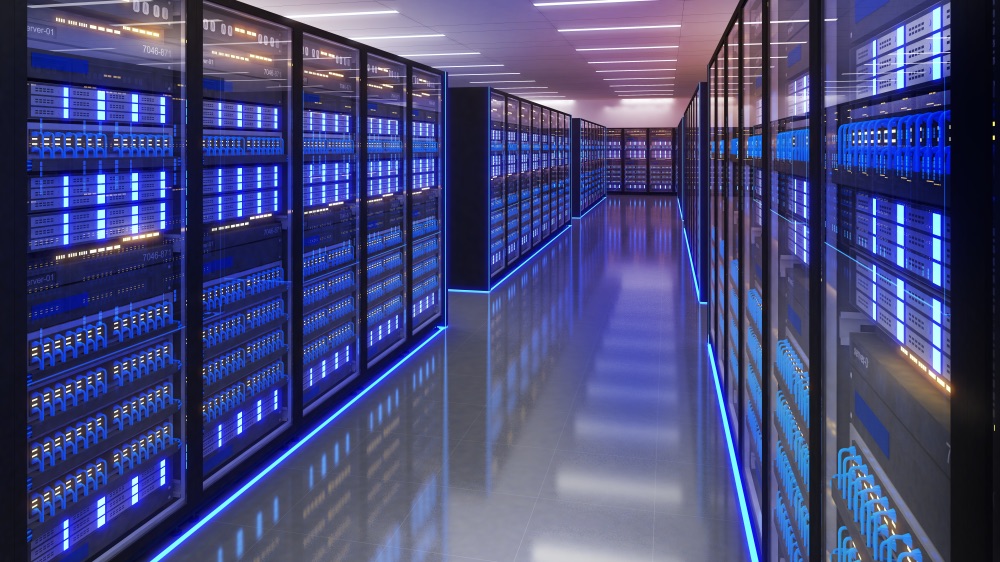It is fascinating to observe how new technology not only drives change but also transforms knowledge into a powerful economic commodity. The knowledge economy, with all its features, has become the defining force of the 21st century, where creativity, technology, and innovation drive productivity and prosperity.
Petra Nilsson-Andersen, Digdir
Per Koch, NIFU
Now, you could argue that the term “knowledge economy “is a bit of a misnomer, given that all human societies and economies have been based on knowledge and skills. Neolithic hunter-gatherers had complex and detailed knowledge of their environment and their culture, and everything they traded was based on this knowledge.
Accordingly, the more recent growth of industrial economies has also been based on knowledge: knowledge of everything from the materials used, through technologies applied to insight into markets.
And given that there are still those who use traditional skills in agriculture, industrial production and services, the new knowledge economy is not replacing everything that came before it, and the shift is gradual. Still, it is both rapid and profound – a true paradigm shift – and it is also changing the more traditional industries in radical ways.
The new knowledge economy transforms economies by increasingly shifting value creation from physical natural resources to investments in human capital, innovation, and technology.
Key features of the new Knowledge Economy
• Data, in combination with human capital and skills, are the core productive resources.
• Digital technologies, data and networks enable rapid spread and use of information.
• Collaboration with start-ups, universities, the public sector and the business society is key.
• Knowledge is treated as the most valuable asset, comparable to or exceeding capital, land, or labour.
• Innovation, R&D and creativity drive competitiveness.
• Continuous learning and upskilling are essential to workers’ success.
Knowledge and service economies compared
The concept is related to the term ‘service economy’.
The service economy refers to an economy in which the production and exchange of services – rather than physical goods – make up the dominant share of economic activity, employment, and value creation. Service economies place their primary weight on knowledge, expertise, and customer interactions, often relying heavily on information technology, logistics, and global networks.[1]
However, while the concept of the service economy is focusing on the type of output – services rather than goods – the knowledge economy is focused on the role of knowledge, information, and innovation as the main drivers of growth, productivity, and competitiveness. Moreover, the emphasis is on industries where complex intellectual capabilities are central: IT, biotechnology, advanced research, higher education, consulting, design, and creative industries.
The ‘service economy’ and ‘the knowledge economy’ are human terms used to make sense of complex social phenomena, not perfect blueprints of the reality ‘out there.’ These types of social transformations overlap and interact, and both approaches help us better understand the rapid changes we see in our society right now.
The new knowledge economy leads to social and cultural change, forcing both companies and traditional knowledge producers, like research institutions and institutions of higher education, to change their strategies and practices in the face of new demands from customers, users and society at large.
This is not easy, as the innovation and research system is conservative and complex and the different knowledge actors often find it hard to adapt to a fast-paced world of data-based knowledge creation and economic growth. A new knowledge economy is emerging. How can this transformation be understood?
The three pillars
Professor Michael A. Peters[2] argues that the knowledge-based economy is built on three pillars, namely ‘the learning economy,’ ‘the creative economy’, and ‘the open knowledge economy.’

Peters asserts that each of these has different understandings of what ‘knowledge economy’ means, and different policy implications – especially for education and for how societies organize production, innovation, and the sharing of knowledge.
In a ‘learning economy’, learning is a process where the capacity to learn is central. An influencer enhancing this concept is Bengt-Åke Lundvall[3] who, together with colleagues during the 1990s, saw the importance of lifelong learning in the development of a European Innovation theory.
At the start of the new millennium, Richard Florida was a leading voice in the debate of the second pillar, ‘the creative economy’, highlighting the economic influence of the creative class[4]. His ideas were based on observations of Pittsburgh’s economic transformation from a steel industrial economy to a creative economy. Florida argued that it was the replacement of the old-fashioned industry with a vibrant, new knowledge and diverse culture attracting creative workers that fostered the city’s innovation and growth.
The third pillar is the idea of ‘the open knowledge economy’. This thinking is based, among others, on Yochai Benkler’s[5] work on how to share knowledge, and how to create commons-based open science and networked growth. The development of ‘open innovation’ also contributes to this approach.
Open innovation is described as “the use of purposive inflows and outflows of knowledge to accelerate internal innovation, and expand the markets for external use of innovation, respectively[6]”.
The toy company LEGO has embraced open innovation to enhance its products, and it is a great example of how organizations can expand their knowledge base. They have left the traditional vertical integration approach where internal R&D activities lead product development and instead applied external knowledge and user insights to widen the space for value creation.
Today, power and influence increasingly derive from intangible assets – such as data, and algorithms. The Letta report[7] on the future of the European Single Market also positions data as a foundational element for Europe’s future economic strategy, promoting open access, interoperability, responsible data governance and knowledge to drive innovation.
Our very understanding of the production and use of knowledge has evolved significantly over time, and data driven knowledge is now core for most organizations. The future of the knowledge economy will therefore continue to be shaped by rapid advances in artificial intelligence and quantum computing, and this allows us to add a fourth pillar to the knowledge economy, ‘the data-driven knowledge economy.’
A data-driven knowledge economy
Big Tech’s growth and expansion are fueled by the continuing dominance of digital infrastructure, and their data harvesting remains the essential factor of production for Artificial intelligence (AI).
In the data-driven knowledge economy, knowledge becomes the main engine of growth and wealth creation, as artificial intelligence transforms data into actionable insights, enables faster decision-making, and innovation. The data-driven knowledge economy is also fueled by strategic investments in AI research and public-private partnerships for AI adoption.
Unintended consequences
And yes, these new technologies will, like the ones preceding them, have negative social, cultural and environmental consequences as well.
As is often the case when it comes to innovation, the hectic commercial race towards market dominance makes too many companies ignore this part of the equation, hiding behind relatively naïve ideas about perfect markets and inevitable progress.
We therefore need to add more social, ethical and cultural knowledge to our understanding of the data-driven knowledge economy and to the policy-learning and policy-development needed to handle these transformations.
Generative Artificial Intelligence
The past few years generative artificial intelligence (Gen AI) has made strong advancements in accelerating the economic power of AI. Gen AI is not only enhancing productivity but also transforming the very nature of how we work with knowledge. By applying generative AI to everyday routines and core activities, this will significantly impact the efficiency of organizations and the economy at large.

In the public sector, data is increasingly contributing to evidence-based policy making as governments are using reliable knowledge, not just opinions or guesses, when developing new policies. Digital assistants and agents can help policymakers by making vast amounts of data understandable and useful.
The Knowledge Assistant[8] developed by the Norwegian Digitalisation Agency and co-created with several stakeholders is a compelling example of how a digital knowledge assistant becomes a work partner allowing employees to focus less on everyday administration and more on creative and strategic work.
Data-driven insights contribute to knowledge creation. In the data-driven economy value is a result of collecting, processing and acting on high quality data. The open-source movement has made large quantities of data available and thus contributes to both the open knowledge economy and the data-driven concepts. The sharing of Digital Public Goods[9] illustrates this movement as open-source software, open data, AI models, and open standards are freely accessible and tools for achieving the Sustainable Development Goals (SDGs).
In Norway, Altinn[10] is built on open-source code, open backlogs and documentation, and contributes to the product portfolio of the global Digital Public Goods Alliance (DPGA). The use of digital public goods benefits global society and enables nations to speed up the transition from resource-dependent economies to innovation-led economies.
Challenges with AI
Again, we should not ignore the problematic sides of utilizing such technologies. One serious challenge is the issue of copyright, especially when AI tools make use of the intellectual property developed by others, often without referencing the original sources. This lack of transparency is problematic.
Secondly, AIs are not smart or wise in the human sense of these words. They can only identify patterns and connections in existing data, and are therefore locked into established terminologies, belief systems, narratives, indicators and statistics. AI models often reflect the biases in their training data. Their use can also lead to serious privacy issues.
It is therefore essential that the institutions utilizing these technologies help their employers develop the skills needed to make use of them in creative and critical ways, especially now, in a time where we must prepare for an unpredictable future with often rapid and even violent social changes. Policymakers may see AI as a way to cut costs and staff, but they must understand that human judgment, empathy, creativity and innovative skills are vital.
So, how can Norway and other countries continue the journey towards a New Knowledge Economy? To transform fully into this economy Norway should combine all concepts of the different knowledge economies and stop relying primarily on commodity extraction alone. In the new knowledge economy we concentrate on creating, learning and sharing data and knowledge. Unlike resource-based growth, knowledge is renewable, and the more it is shared, the more powerful it becomes.
Top photo: Foto miniseries
[1] Faïz Gallouj: Innovation in the Service Economy: The New Wealth of Nations
[2] [2] Michael A. Peters. Three Forms of the Knowledge Economy: Learning, Creativity and Openness, British Journal of Educational Studies, 2010
[3] The globalizing learning economy, BÅ Lundvall et al1997
[4] R. Florida, The Rise of the Creative Class, 2002
[5] Yochai Benkler, The Wealth of Networks, 2006
[6] H. Chesbrough, Open Innovation: The new Imperative for Creating and Profiting from Technology, 2003.
[7] Enrico Letta, Much more than a market, 2024
[8] Kunnskapsassistenten | Digdir
[9] Digital Public Goods www.digitalpublicgoods.net/

